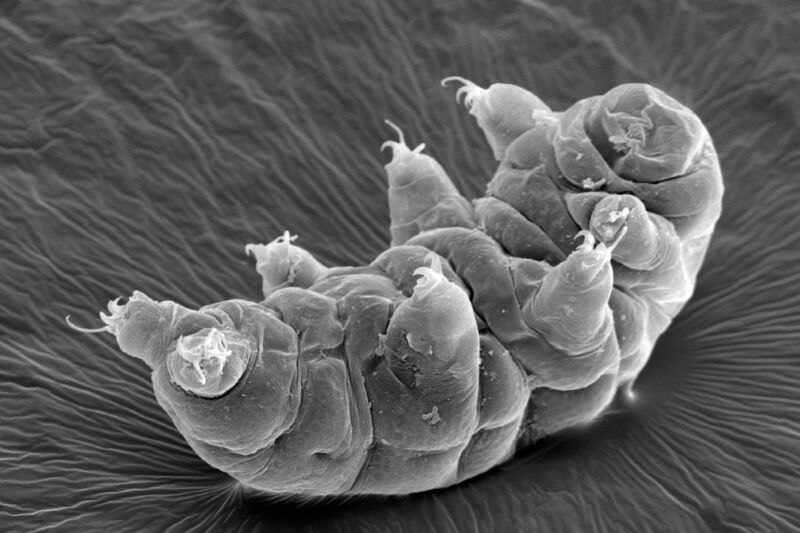Scientists glean new insights into how tardigrades can survive dehydration

Enlarge / SEM Micrograph of a tardigrade, more commonly known as a water bear or "moss piglet." (credit: Cultura RM Exclusive/Gregory S. Paulson/Getty Images)
Tardigrades are micro-animals that can survive in the harshest conditions: extreme pressure, extreme temperature, radiation, dehydration, starvation-even exposure to the vacuum of outer space. Scientists at the University of Tokyo have now identified the mechanism to explain how tardigrades can survive extreme dehydration in particular, according to a new paper published in the journal PLoS Biology-a protein that forms a protective gel-like network to protect dried-out cells.
As we've reported previously, the creatures were first described by German zoologist Johann Goeze in 1773. They were dubbed tardigrada ("slow steppers" or "slow walkers") four years later by Lazzaro Spallanzani, an Italian biologist. That's because tardigrades tend to lumber along like a bear. Since they can survive almost anywhere, they can be found in lots of places: deep-sea trenches, salt and freshwater sediments, tropical rain forests, the Antarctic, mud volcanoes, sand dunes, beaches, and lichen and moss. (Another name for them is "moss piglets.")
When their moist habitat dries up, however, tardigrades go into a state known as "tun"-a kind of suspended animation, which the animals can remain in for as long as 10 years. When water begins to flow again, water bears absorb it to rehydrate and return to life. They're not technically members of the extremophile class of organisms since they don't so much thrive in extreme conditions as endure; technically, they belong to the class of extremotolerant organisms. But their hardiness makes tardigrades a favorite research subject for scientists.